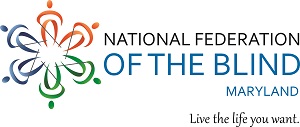WHEREAS, if blind persons are to participate fully in all aspects of community life, we must have equal access to technologies used by public transportation services; and
WHEREAS, technology is changing the way that the public requests and pays for transportation from taxi cabs, newly emerging transportation providers, mass transit and paratransit systems; and
WHEREAS, the Maryland Public Service Commission (PSC) recently ordered Baltimore City Taxi Cabs to install credit card payment devices in their back seats by December 31, 2014, but did not include requirements for nonvisual access to these devices; and
WHEREAS, the PSC is currently drafting regulations to update the “passenger-for-hire” rules to govern the relationship between passengers and transportation providers; and
WHEREAS, currently, the draft regulations do not provide for nonvisual access to phone apps or websites that are used to request rides, track the arrival of a ride, or pay for the ride; and
WHEREAS, in January 2015, the Washington Metropolitan Area Transit Authority (WMATA) will conduct a pilot program enabling customers who use certain rail stations and bus routes to pay for services with smartphones and other fare technologies, but even here there is no evidence that this program will include nonvisual access for blind customers; and
WHEREAS, many paratransit systems throughout Maryland are beginning to allow customers to request rides online, but again the nonvisual accessibility is limited or nonexistent: Now, Therefore,
BE IT RESOLED by the National Federation of the Blind of Maryland in Convention assembled this sixteenth day of November, 2014, in the city of Towson, MD, that this organization strongly urge the Maryland Public Service Commission, the Maryland State Department of Transportation, the Washington Metropolitan Area Transit Authority, and other local transportation entities to ensure that nonvisual access requirements are part of all development of new transportation technologies, websites and apps so that these systems are as usable by the blind as they are by the sighted; and
BE IT FURTHER RESOLVED that this organization insist that these transportation entities take immediate steps to revise existing websites, forms, and apps to ensure nonvisual accessibility.
